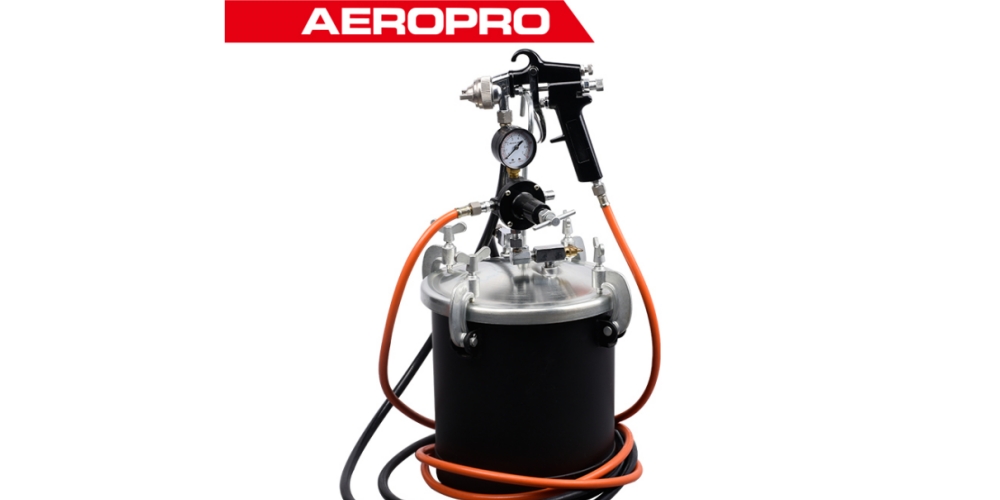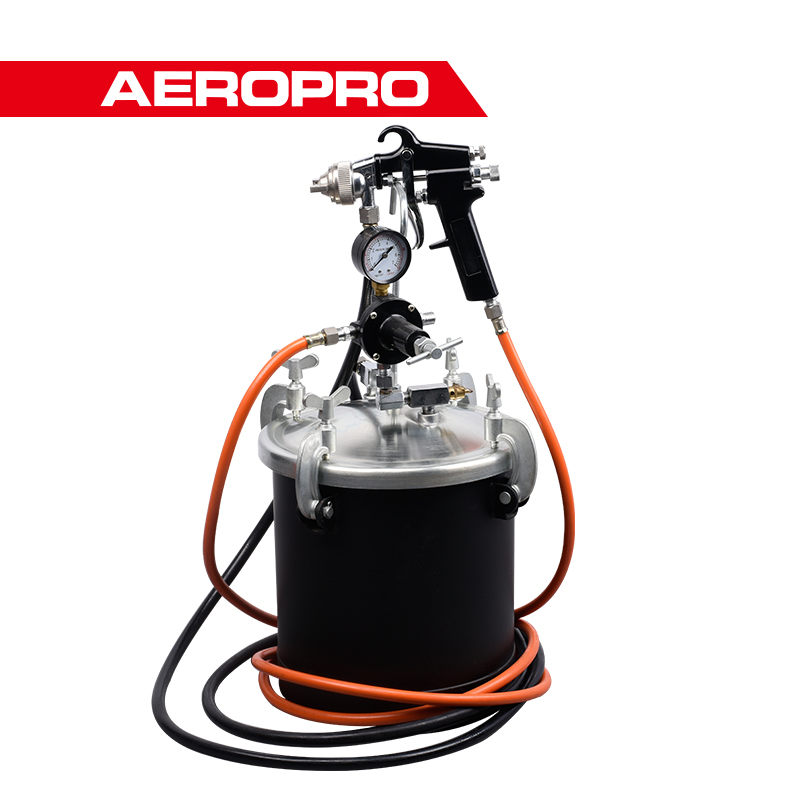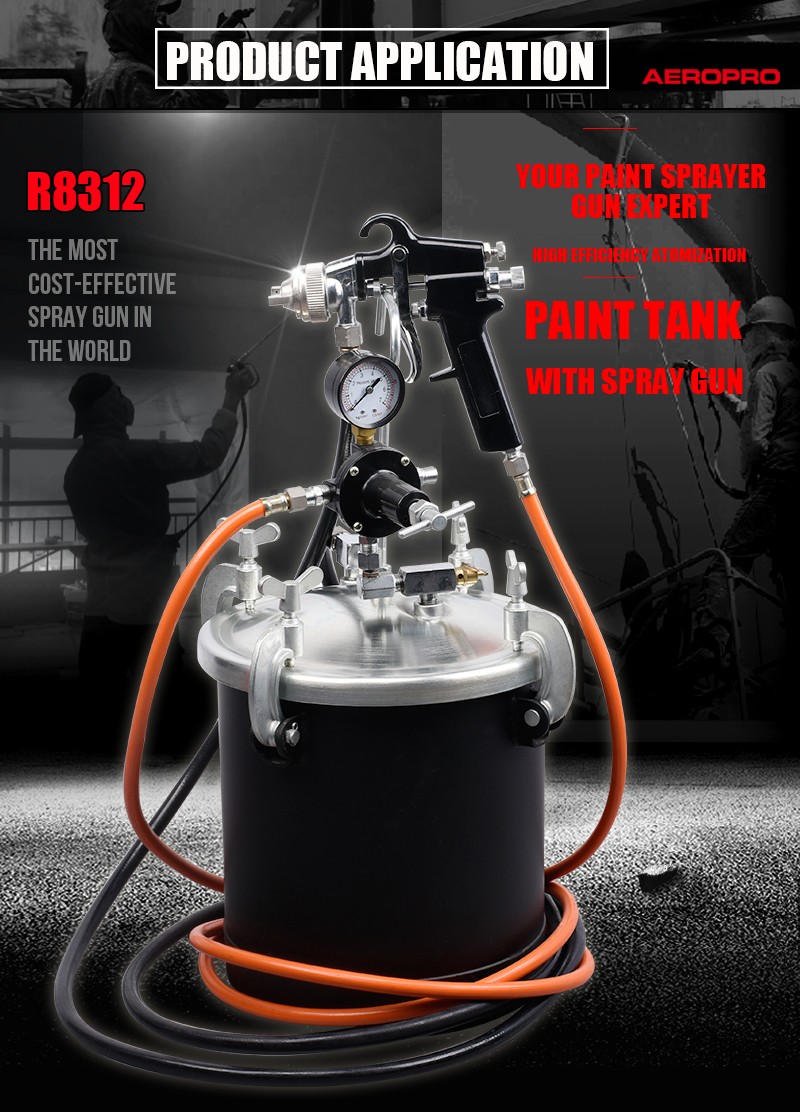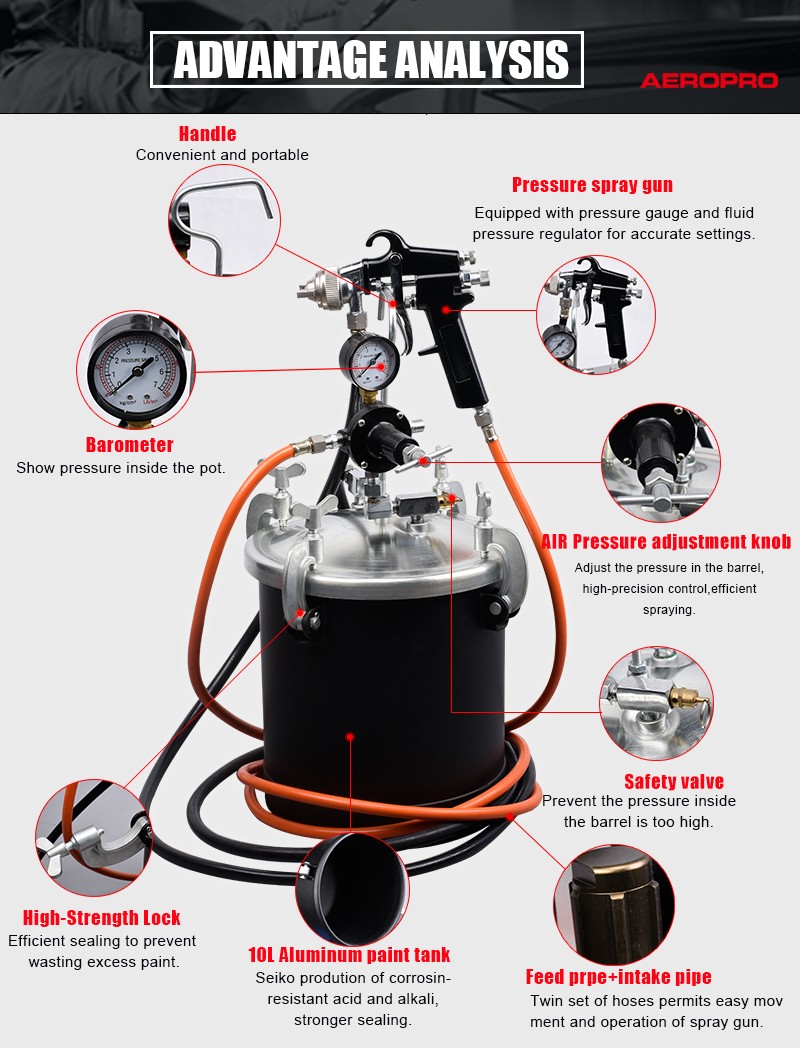
Painting with a pressure paint tank is a great way to paint large surfaces quickly.
They are excellent for large areas such as buses, trucks, and vans, painting fences, exterior walls, and other big projects. Using a pressure paint tank takes a little practice, but once you get the hang of it, you'll find it makes painting large areas fast and easy.

AEROPRO A8312 Paint Tank W/Spray Gun
The first step in using a pressure paint tank is preparing and setting up the tank. Start by making sure your paint tank is clean. Any dried paint or debris left over from previous use can clog up the hose and spray nozzle.
Fill the tank about three quarters full with your desired paint. Latex and oil-based paints both work well in pressure tanks. Screw the lid tightly onto the tank and make sure all seals are properly in place.
Attach your hose and spray gun securely to the tank. Make sure the nozzle on the spray gun is clean and appropriate for the type of paint you are using. Consult your pressure tank's manual for specific setup instructions.
Once your pressure paint tank is prepped with paint and assembled, you need to prime and pressure the tank. Make sure the tank's pressure setting is turned all the way down before beginning.
Turn on the tank and allow it to run for a few seconds to prime the pump and hose. Priming the tank helps prevent paint spraying everywhere when you pull the trigger for the first time.

AEROPRO A8312 Paint Tank W/Spray Gun
Now you're ready to start spraying. Hold the spray gun perpendicular to and 6 to 12 inches away from the surface you are painting. Squeeze the trigger to release the paint in a fine, even spray. AEROPRO A8312 has twin set of hoses permits easy movement and operation of spray gun.
Apply the paint in long, overlapping strokes, releasing the trigger at the end of each stroke. Maintain consistent motion to achieve a smooth coat. Avoid holding the nozzle too close or in one spot too long, as this can cause drips and uneven coverage.
As you paint with the pressure tank, stop periodically to stir the paint inside the tank. The pumping action tends to separate the paint, so stirring prevents pigment settling and inconsistencies in color. You may need to adjust the pressure as you work to maintain a proper spray pattern.

AEROPRO A8312 Paint Tank W/Spray Gun
It's also important to clean your equipment thoroughly when finished painting with a pressure tank. Start by cleaning the spray nozzle, as dried paint here can impede function. Drain any remaining paint back into cans if desired.
Use paint thinner to rinse the tank, pump, and hose. Spray some thinner through the gun nozzle to clean it out. Wipe down all parts and allow them to fully dry before storing. Proper cleaning between uses prevents clogs and ensures your pressure paint tank provides quality service for many painting projects to come.
Painting with a pressure tank does take some practice to get the hang of. Adjusting the pressure, spraying at the proper distance, and maintaining consistent motion while painting all come with experience.
When starting out, try spraying a scrap piece of wood to get a feel for the controls. Don't get frustrated if your first attempts are not perfect. With a little time, you will soon be painting like a pro with your pressure paint tank.
For fast, efficient coverage on broad surfaces, the AEROPRO A8312 is an excellent choice. It's loaded with power features to help you achieve professional-looking paint jobs with ease.